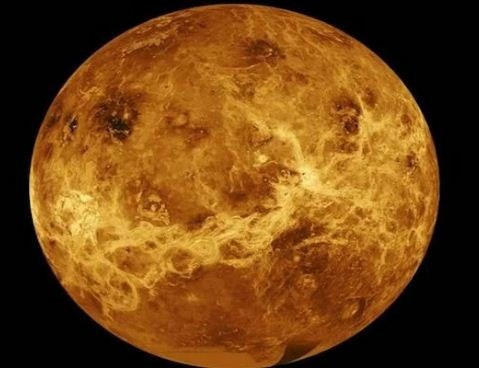Los Angeles
NASA on Thursday announced plans to launch two new scientific missions to Venus between 2028 and 2030 – its first in decades – to study the atmosphere and geologic features of Earth’s so-called sister planet.
The US space agency said it was awarding about $500 million for development of each of the two missions, dubbed DAVINCI+ (short for Deep Atmosphere Venus Investigation of Noble Gases, Chemistry and Imaging) and VERITAS (an acronym for Venus Emissivity, Radio Science, InSAR, Topography and Spectroscopy).
DAVINCI+ will measure the composition of the dense Venusian atmosphere, seeking to improve understanding of how it evolved, while VERITAS will map the planet’s surface from orbit to help determine its geological history and why it developed so differently than Earth, NASA said.
DAVINCI+, consisting of a fly-by spacecraft and an atmospheric descent probe, is also expected to return the first high-resolution images of unique geological characteristics on Venus called “tesserae.”
Scientists believe those features may be comparable to Earth’s continents and suggest that Venus has plate tectonics, according to NASA’s announcement.
Earth’s closest planetary neighbor and the second planet from the sun, Venus is similar in structure but slightly smaller than Earth, with a diameter of about 7,500 miles (12,000 km).
Above its foreboding landscape lies a thick, toxic atmosphere consisting primarily of carbon dioxide, with clouds of sulfuric acid droplets.
The consequence is a runaway greenhouse effect that bakes the surface of Venus at temperatures as high as 880 degrees Fahrenheit (471 Celsius), hot enough to melt lead.
Venus has lately received less scientific attention than Mars, Earth’s next-closest planetary next-door neighbor, and other solar system destinations.
“We’re revving up our planetary science program with intense exploration of a world that NASA hasn’t visited in over 30 years,” Thomas Zurbuchen, NASA’s associated administrator for science, said in a statement announcing the missions.
NASA’s Magellan spacecraft, which reached Venus in 1990, made the first global map of the Venusian surface as well as global maps of the planet’s gravity field.
In 1994, the Magellan spacecraft was sent to plunge into the surface of Venus to gather data on its atmosphere before it ceased operations.—AFP










